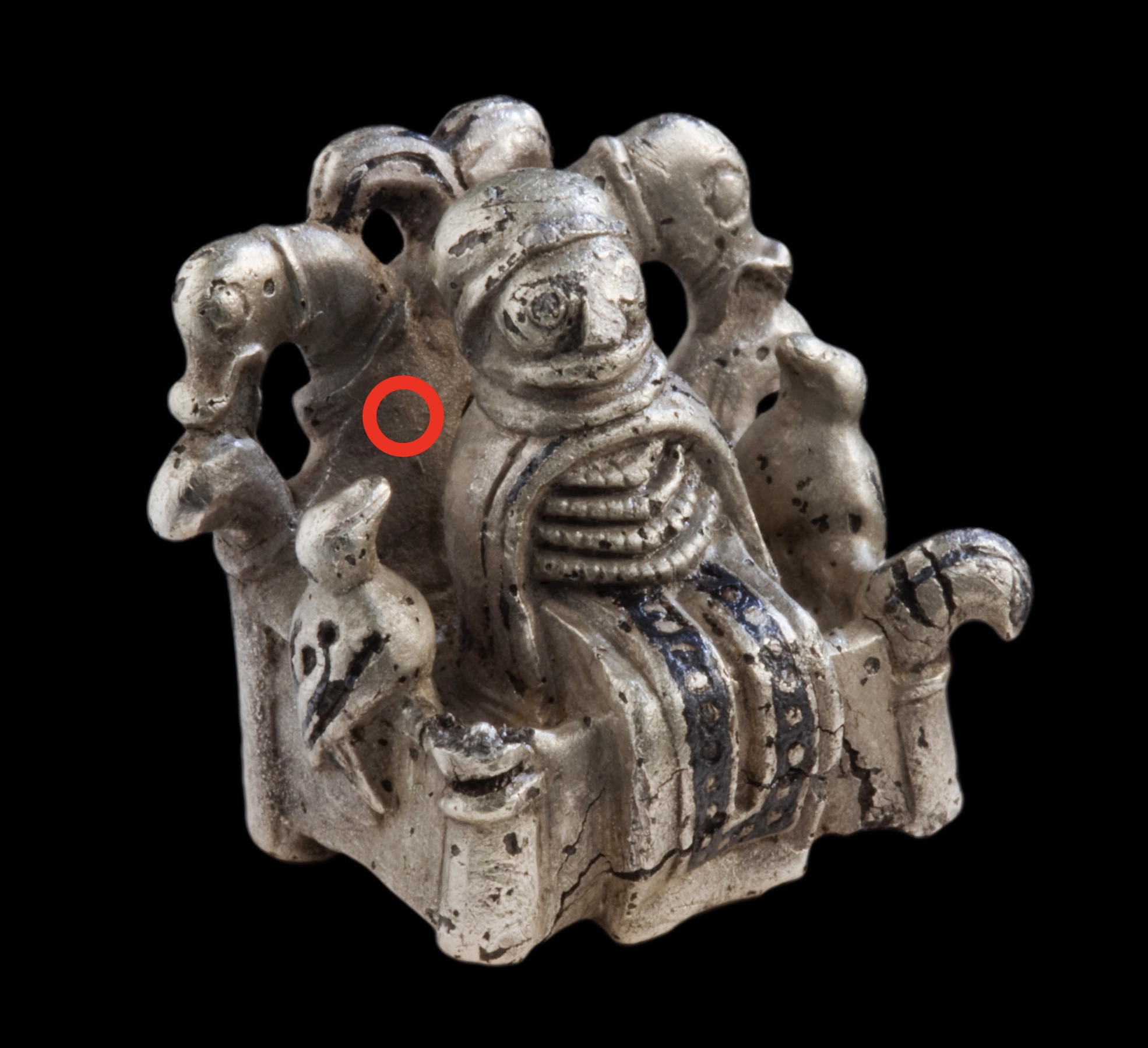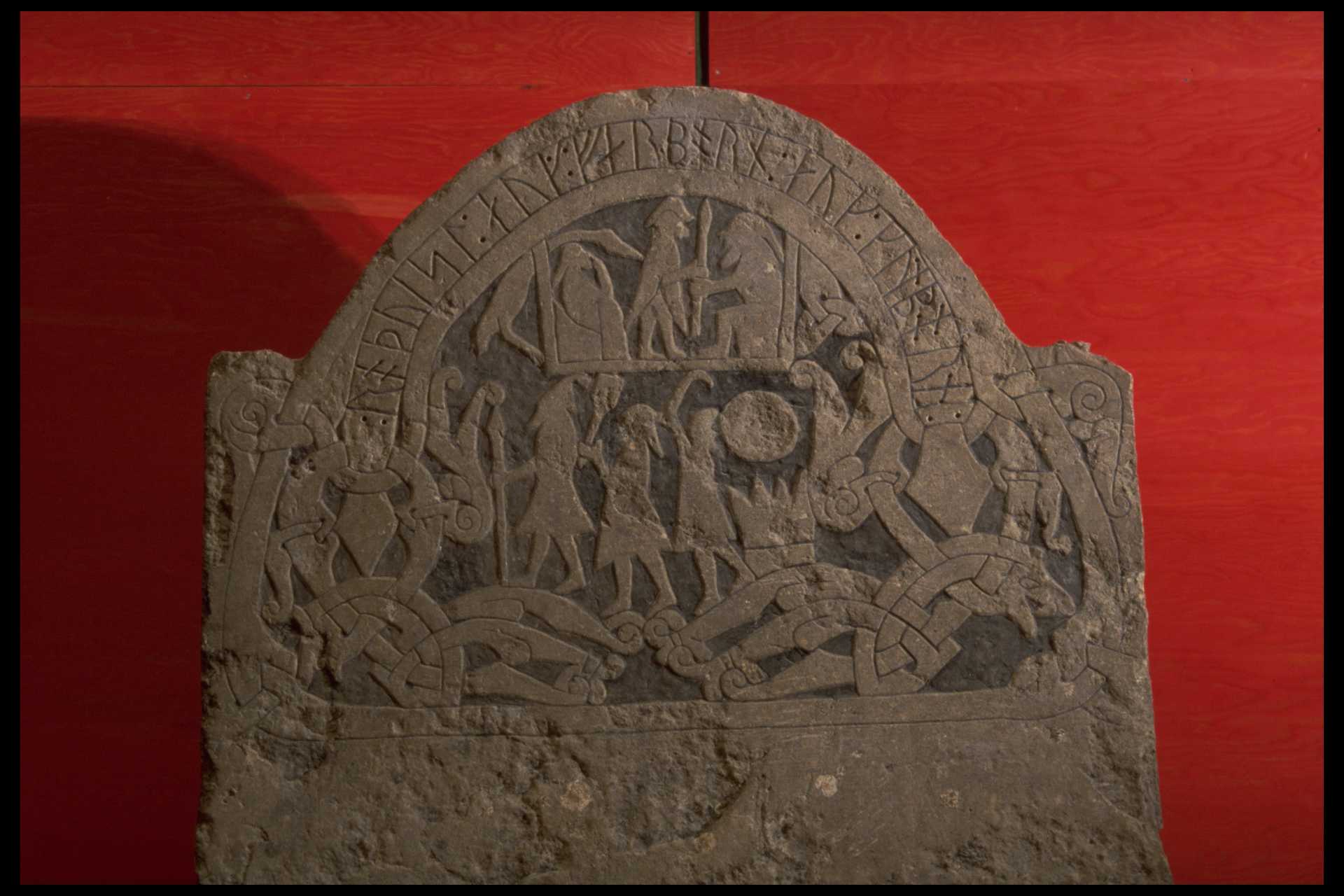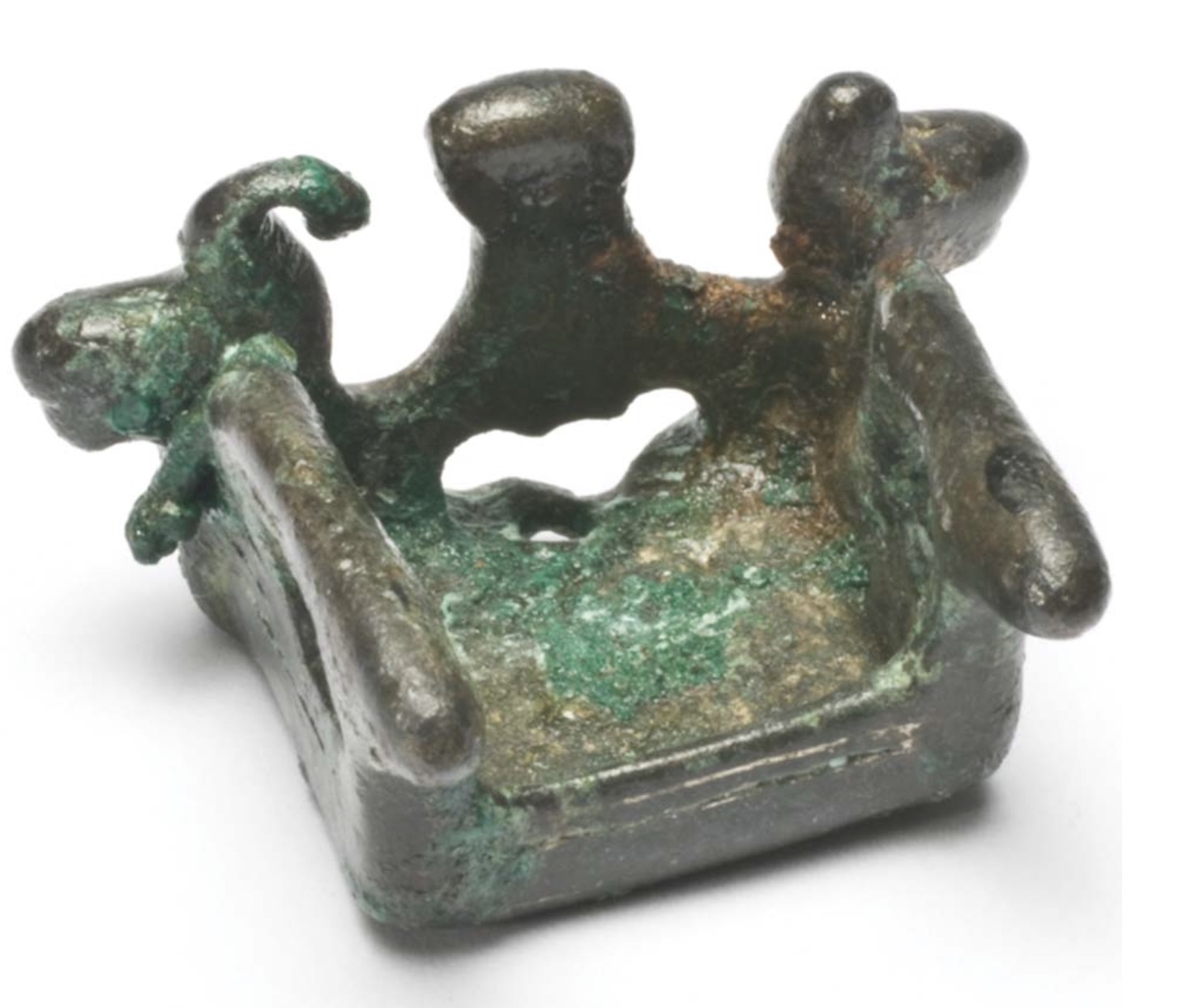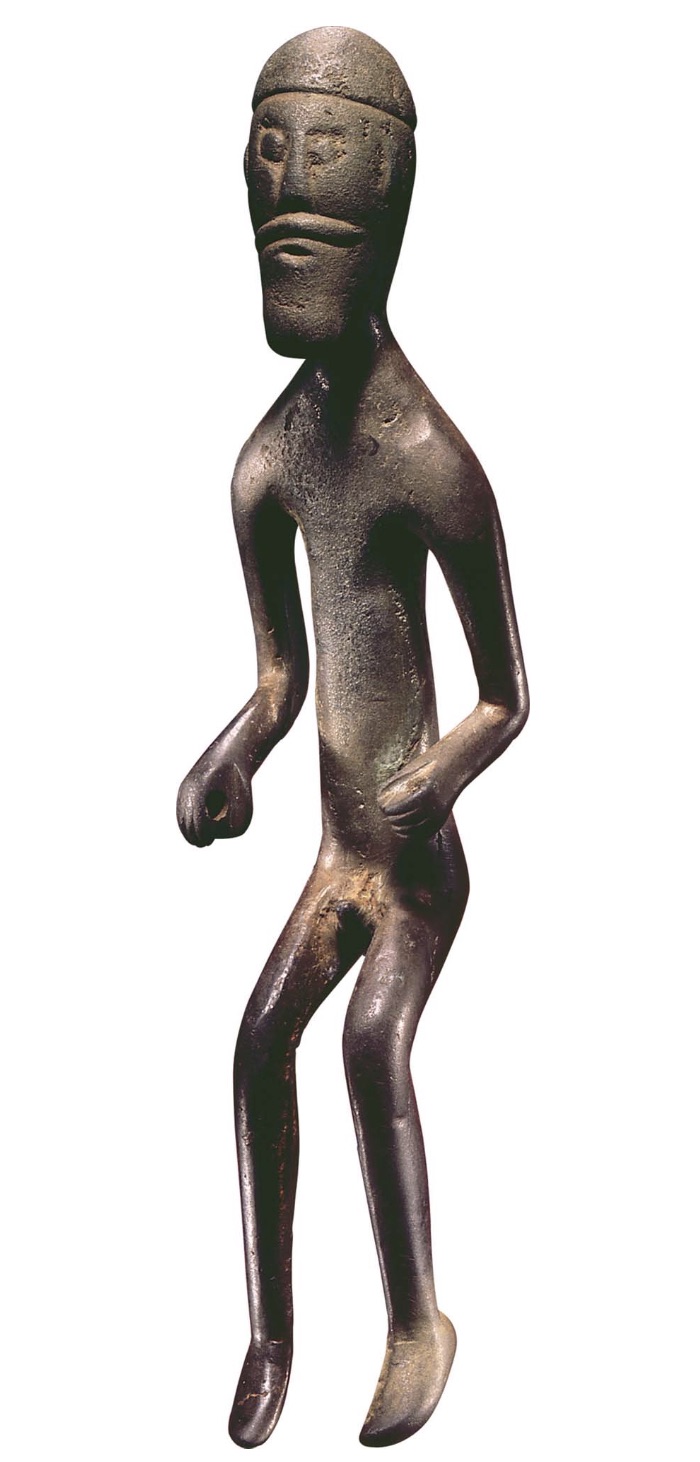According to the Lejre museum, the chair might be Odin’s throne Hildskjalf. From Hildkjalf, Odin was said to be able to see all of the world. If the maker or user associated the chair with Hildkjalf as it is described in textual sources, it might have interesting implications for the object’s purpose.

Figure from Lejre, DK.
Silver with niello inlay.
1.8×2.0×1.3 cm.
(source: Wikimedia)
At first, it may seem counterintuitive to depict Hildkjalf in such a portable form. Whether the object was kept in someone’s pocket or was even an amulet worn around someone’s neck, the inclusion of Hildkjalf could be a symbolic reminder of Odin’s watchful position. Perhaps the object was even meant to grant the user some of the powers it potentially depicts; including Hildkjalf might simply remind the wearer to be more observant, or could have even been believed to facilitate the transfer of some sort of watchful power.

Gotland Runestone 181
possibly showing Odin seated on Hildkjalf
(source: SHM)
As discussed on the page about the animal heads, of the limited Viking Age furniture that has survived to present day, there are no full-sized thrones to which we can compare the chair from the Lejre figure. The Lejre figure, however, is not the only chair amulet that has been associated with the Viking Age.
One burial of a woman in Hedeby included a miniature silver throne which scholars believe would have originally included a sitting figure (Christensen 2014). Of the various miniature chairs that have been found in Viking sites, this Hedeby throne is by far the most similar to the chair part of the Lejre figure. The two objects are very similar in size (both close to 2 centimeters in height and width). Moreover, they both include animal elements in their design. In the case of the Hedeby miniature, the most prominent animals visible appear to be bird-like, although they are not symmetrical like on the Lejre figure. The existence of another chair with bird-figures on the armrest might also suggest a wider range of possible identities for the person in the Lejre figure. If there is a direct connection between the Hedeby miniature and the Lejre figure, the variation in the shape of the birds on the Hedeby miniature (one appears swan-shaped) might mean that the birds on the Lejre figure are not even intended to be ravens, much less Huginn and Muninn in particular.

Hedeby Throne
(source: Christensen 2014)
Discussions of the gender of the person in the Lejre figure are closely related to those about miniature chairs, which are often found in women’s graves. Some scholars have interpreted these miniature chairs “as representing thrones for sorcery, forming part of the equipment of a sorceress” (Graham-Campbell 2021, p. 163). Alternatively, these chair pendants may have been symbolic “high-seats” if not Hildkjalf specifically. According to Graham-Campbell, “the ‘high-seat’ was a place of honor in the hall of a chieftain, who would have presided over ceremonial rituals” (p. 163).
The argument that the Hedeby throne figure would have originally been accompanied by a sitting figure can also shift the way that we look at other sitting Viking figures that have been found without chairs, such as the Højby figure. While it is unclear whether such a figure would have been attached and then later broken off, or its own independent piece, it would be interesting to look at the bottoms of some of these existing sitting figures for signs of wear that might indicate a missing chair component. Unfortunately, it is hard to find such images online or view these artifacts from beneath in their museum displays.

Højby Figure
(source: Christensen 2014)
Christensen, Tom. 2014. “A Silver Figurine from Lejre.” Danish Journal of Archaeology 2, no. 1: 65–78. (online)
Graham-Campbell, James. 2021. Viking Art. 3rd ed. World of Art. London: Thames and Hudson.
« Previous | Home | Next »